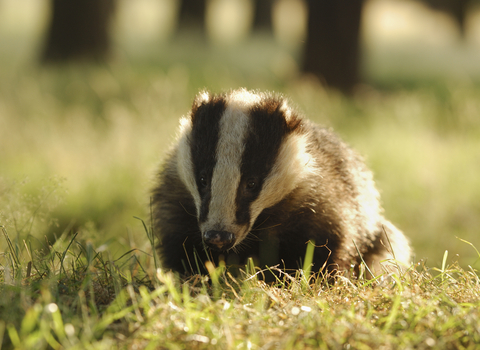We oppose the cull
The Wildlife Trusts oppose the badger cull and believe that it is an ineffective tool in the fight against bovine tuberculosis (bTB). The Government’s move to extend the cull to hotspots in the Low Risk Area (LRA) contradicts the scientific principles set out in the Randomised Badger Culling Trial (RBCT) [1]. This comprehensive study showed that culling led badgers to roam more widely, increasing transmission within their own population and infecting cattle over wider areas, this is known as perturbation.
The Wildlife Trusts’ Senior Policy Manager Ellie Brodie says “Crucially, small, patchy or inefficient culls can worsen the problem. Neither form of culling – large or small scale - can eradicate the disease, because both increase TB within the badger population and spread infection to new areas. Therefore, a policy to cull badgers in pockets of the Low Risk Area, is not a wise move in the fight against bTB.”
The Wildlife Trusts oppose the badger cull and believe that it is an ineffective tool in the fight against bovine tuberculosis (bTB).
Vaccinate badgers, don’t cull them
There is robust scientific evidence to prove that badger vaccination reduces the transmission of bTB in badgers [2]. Several studies demonstrate that vaccinating badgers reduces the progression, severity and the likelihood that the infection would be passed on, once a badger is infected [3,4,5].
We argue that the hotspots of bTB in the LRA could be good places to trial large-scale and coordinated Government-led badger vaccination programmes. The Wildlife Trusts could help to deliver this and have a record of delivering successful badger vaccination. For instance, Derbyshire Wildlife Trust run a large-scale programme which aims to strategically vaccinate badgers, working with partners, over a wide area.
bTB on farms
Research has found that bTB bacteria can survive for months either on fields or in slurry. To tackle this key route of the spread of bTB, strict biosecurity procedures are key. Defra should provide as much support as possible to farmers to make sure these procedures and rigorous tests are in place. This approach could radically limit the spread of bTB between cattle and badgers.
The residual disease in wildlife could then be managed by a comprehensive badger vaccination scheme which is cost effective, and has been proven to reduce the incidence and severity of the disease in badgers. Badger vaccination, in tandem with better biosecurity, movement controls and eventually cattle vaccination, offers the best deal both for farmers and wildlife.

